Biomass Boilers
With the worsening global energy shortage, renewable energy has attracted the attention of many countries. As one of the earliest professional manufacturers involved in the biomass boiler industry, Mount Taishan Group has made gratifying achievements in the research, development, design, manufacturing, operation and other aspects of biomass boilers through its development in recent years.

Types
Unsure how to choose a Biomass Boiler?
Contact us for complimentary boiler selection guidance, cost estimations, and expert technical advice for your project.
Featured
The circulating fluidized bed straw furnace jointly developed by the company and Southeast University has been successfully put into operation at Shandong Wudi Jingneng Biomass Power Plant, and all technical indicators have reached the advanced level in China.
Wide Fuel Adaptability
Soft coal, anthracite, lean coal, lignite, gangue, industrial cinder and sludge. Biomass such as, crop straw, corn cob, rice straw, straw bran, wood chip, bagasse, sawdust, peanut shell, palm husk, rice husk, tree branches and leaves, hay, etc.
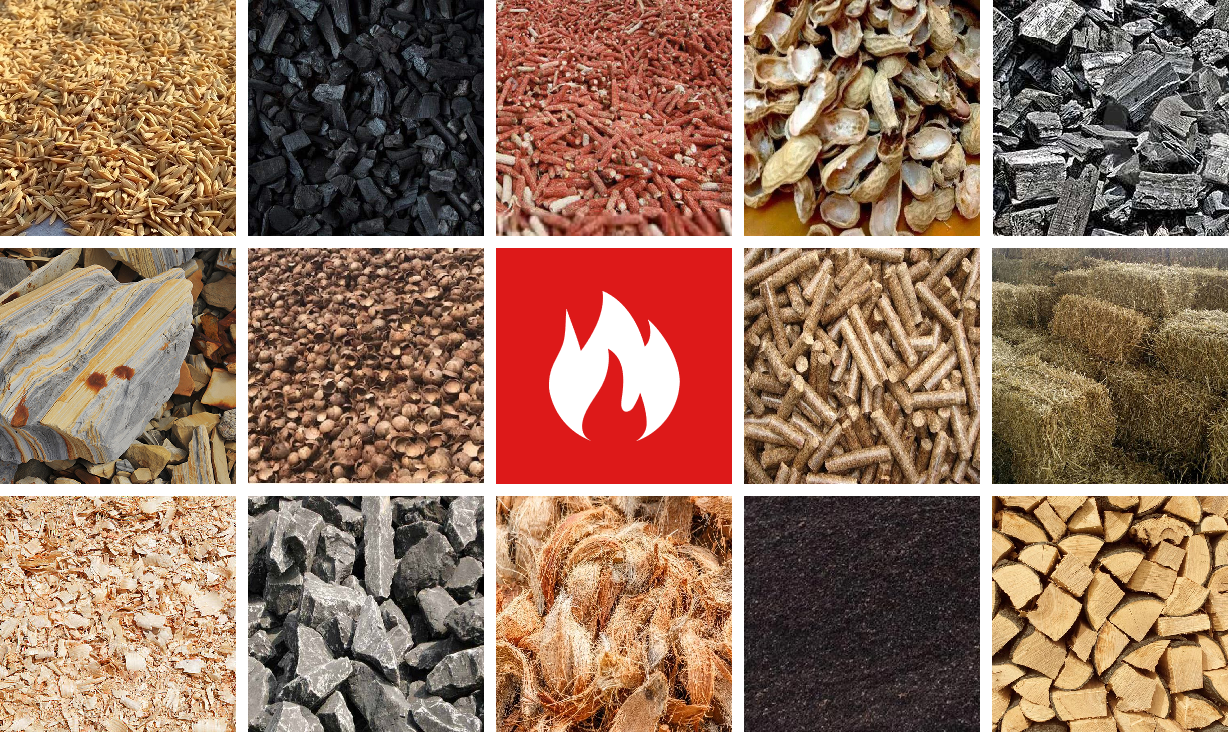
Environmental friendly
- Low NOx Pollutant Emission NOx ≈ 60Nm3
- Low SO₂ Pollutant Emission
- Capable of Burning Low-Quality Fuel
- Good Utilization Performance of Ash and Slag

Safe & Reliable Operation
- Annual Operating Time >7500 Hours
- Continuous Operation Time >4500 Hours
- Annual Operating Time 3-4 years

Energy efficient

Good Load Adjustment

Why Choose Taishan Group ?
Leading coal, biomass and waste to energy solution provider.
- Covering Entire Project Lifecycle A-Z Service.
- Ranked top in China's industrial boiler industry for 10 consecutive years.
- Access cutting-edge, eco-friendly energy solutions.
- Benefit from over 70 years of technical expertise.
- Align with global sustainability initiatives.
- China largest-capacity biomass power generation boiler.
- Experience reliable, efficient equipment for green development.
378000+
Workshop m²
5000+
Trained Staff
1978
History Since
Project Case

2 sets 30TPH spent grain Biomass Boilers, 1 set 9MW backpressure steam turbine & generator. For Thailand's largest & Southeast Asia's leading beverage companies Thai Beverage Palm Shell Boiler EPC Project. (ASME)
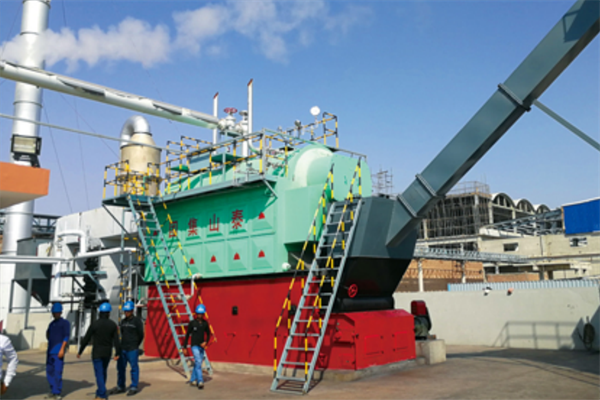
1 set 4t/h HFO boiler & 1 set 4t/h wood chip Biomass steam boiler EPC Project for SCHNECKSCHNECK in Uruguay.

15ΤPH, 7 sets 20TPH, and 2 sets 30TPH anthracite fired boilers for Vietnam's top instant noodle manufacturer Acecook Vietnam Joint Stock Company.

38TPH Palm fiber steam boiler for Thailand THACHANA PALM OIL CO..LTD.

35t/h palm fiber steam boiler for a Southeast Asia well-known brand ,leading player in the Fast Moving Consumer Goods (FMCG) industry,LAM SOON PTE.LD. This project utilizes the palm fiber leftover from palm oil extraction to generate steam.
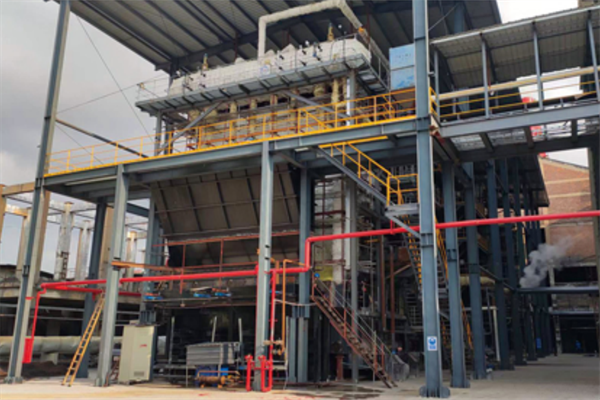
30t/h biomass boiler for packaging paper manufacturer,Zhongshan United Hongxing Paper Mill.

75t/h biomass power plant boiler for heat and power company, Xingtai Shuangjie Thermal Power Co., Ltd., for the generation of electricity, and the process production heating.
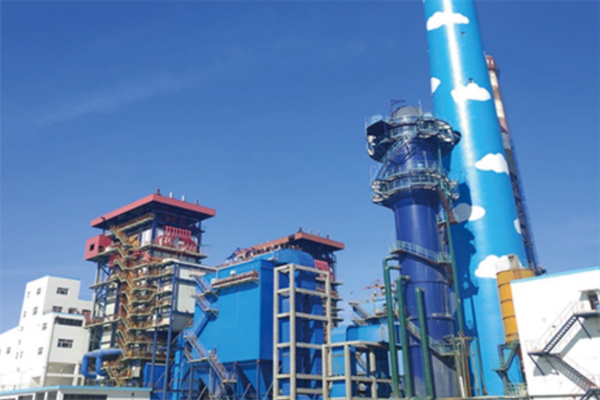
170t/h biomass power plant boiler for Weixian Aosen New Energy Co., Ltd. , The boiler generates steam by burning biomass fuel, driving generators to produce electricity and providing clean energy to the power grid.
FAQ
Frequently Asked Questions about Biomass Boiler.
A biomass boiler is a heating system that uses biomass as fuel to provide hot water and heating for homes and businesses. Biomass refers to organic materials, such as wood logs, pellets, or chips, agricultural residues, and other plant-based materials, that can be used as fuel. These boilers are considered a sustainable and renewable source of energy because they utilize materials that are either waste products from other processes or sourced from sustainably managed forests.
The working process of a biomass boiler involves several key steps:
1. Fuel Feeding: Biomass fuel is fed into the boiler’s combustion chamber, either manually or automatically through a hopper system. Automatic feeding systems are common in modern biomass boilers, providing ease of use and consistent fuel supply.
2. Combustion: The biomass fuel is burned in the combustion chamber. This process releases heat energy. Biomass boilers are designed to achieve efficient combustion, often utilizing advanced technology to ensure complete burning of the fuel.
3. Heat Transfer: The heat generated from burning biomass is transferred to water. In a typical setup, water circulates through pipes or a heat exchanger in the boiler. As the water passes through, it absorbs the heat, becoming hot water or steam.
4. Distribution: The hot water or steam is then circulated throughout the building via a system of pipes to radiators or a heat exchanger in an air handling unit for space heating. In some systems, the hot water can also be used directly for domestic hot water needs.
5. Emission Control: Modern biomass boilers are equipped with advanced systems to reduce emissions. This includes filters and scrubbers that capture particulates and other pollutants, ensuring that the boiler operates within environmental standards.
6. Ash Removal: The combustion process produces ash as a byproduct. Many biomass boilers have automatic ash removal systems that collect and remove ash from the combustion chamber, making maintenance easier.
Biomass boilers offer several benefits, including the use of renewable and often local resources, reduced dependence on fossil fuels, and potential cost savings over time. However, their suitability and efficiency can depend on various factors, such as the type of biomass fuel used, the boiler’s technology, and the heating requirements of the building.
The core components of a CFB boiler include the combustion chamber, cyclone separators (to separate and recirculate the bed material), heat exchangers or boiler tubes (to absorb the heat generated by combustion), and control systems for managing air supply and fuel feed. The circulation of the bed material enhances heat transfer and ensures uniform temperature distribution within the combustion chamber, leading to efficient and clean combustion.
Whether biomass boilers are worth the investment depends on several factors related to your specific situation, the local availability and cost of biomass fuels, environmental considerations, and financial incentives. Here are key points to consider when evaluating the worthiness of a biomass boiler:
Advantages
1. Renewable Energy Source: Biomass boilers use materials that are considered renewable, which can help reduce reliance on fossil fuels and lower carbon emissions, assuming sustainable sourcing of biomass.
2. Cost-Effective Fuel: Depending on your location, biomass fuels like wood chips, pellets, or agricultural waste can be cheaper than fossil fuels, especially in areas with abundant biomass resources.
3. Financial Incentives: Some regions offer grants, tax incentives, or subsidies for installing renewable energy systems, which can offset the initial investment in a biomass boiler.
4. Energy Independence: Using locally sourced biomass can increase energy independence and resilience by reducing reliance on imported fuels.
5. Carbon Neutral: Biomass is often considered carbon neutral because the CO2 released during combustion is approximately equal to the CO2 absorbed by the plants during their growth, although this balance can vary based on fuel source and transport distances.
Disadvantages
1. High Initial Costs: The upfront cost of purchasing and installing a biomass boiler can be higher than traditional heating systems. This includes the cost of the boiler itself, storage for the biomass fuel, and potentially more complex installation requirements.
2. Space Requirements: Biomass boilers and the associated fuel storage can require more space than conventional boilers, making them less suitable for properties with limited space.
3. Fuel Storage and Handling: You’ll need to consider the logistics of storing and handling biomass fuel, including space for storage and the effort involved in loading the fuel into the boiler if not automated.
4. Maintenance: Biomass boilers can require more maintenance than gas or oil boilers. This includes managing ash production, cleaning to maintain efficiency, and ensuring the fuel supply is dry and of high quality.
5. Environmental Considerations: While biomass is considered renewable, there are environmental considerations such as the impact of cultivating, harvesting, processing, and transporting biomass fuels. The sustainability of biomass heating also depends on ensuring that biomass sources are managed and replenished.
Making the Decision
– Cost Analysis: Compare the total cost of ownership, including installation, fuel, maintenance, and potential savings or earnings from incentives.
– Environmental Goals: Consider whether reducing your carbon footprint aligns with your personal or business environmental goals.
– Fuel Availability: Research the availability and cost of biomass fuel in your area, as well as the reliability of supply.
– Local Regulations and Incentives: Check for any local regulations regarding biomass boilers and what incentives might be available to offset costs.
In summary, biomass boilers can be a worthwhile investment for those prioritizing renewable energy, have access to affordable and sustainable biomass fuel, and are prepared for the initial financial and logistical considerations.
The cost of a biomass boiler can vary widely depending on several factors, including the size and type of boiler, its capacity (measured in kilowatts (kW)), the complexity of the installation, and the type of biomass fuel it is designed to use. Here’s a general breakdown to give you an idea:
Small Residential Boilers
– For small homes or cabins: Prices might start from around $3,000 to $10,000 for smaller systems (up to 25 kW). These boilers are typically used in residential settings and can accommodate the heating needs of a modest-sized home.
Medium to Large Residential Boilers
– For larger homes or small commercial buildings: The cost can range from $10,000 to $25,000 or more for systems in the range of 25 kW to 100 kW. The price increases with the size and complexity of the system, including the need for larger fuel storage and more sophisticated emission control technologies.
Commercial and Industrial Boilers
– For commercial or industrial use: Prices can range significantly from $25,000 to over $100,000 for high-capacity systems (over 100 kW). Commercial systems are designed to heat larger spaces such as schools, office buildings, or industrial facilities and often require customized solutions to meet specific heating demands and efficiency requirements.
Additional Costs
– Installation: The cost of installing a biomass boiler can vary greatly based on the complexity of the system, any necessary modifications to the property, and local labor rates. Installation can add several thousand dollars to the total cost.
– Fuel Storage: You may need to construct or modify a space for fuel storage, which can add to the upfront costs.
– Maintenance and Operation: Ongoing costs include purchasing biomass fuel, routine maintenance, and potential repairs. These costs will vary based on the type of fuel used, the size of the boiler, and how often it’s used.
Financing and Incentives
– Incentives: Some governments offer financial incentives for installing renewable energy systems, including tax credits, rebates, and grants. These can significantly offset the initial investment.
– Return on Investment: While the upfront costs can be high, the potential savings on fuel costs compared to fossil fuels can make biomass boilers a cost-effective solution in the long term, especially in areas where biomass fuels are readily available and cheaper than conventional fuels.
It’s important to get multiple quotes from different suppliers and installers to understand the full range of options and costs for your specific needs. Also, consider the long-term savings and potential incentives when evaluating the overall cost-effectiveness of a biomass boiler system.
The running costs of biomass boilers can vary significantly based on several factors, including the type and cost of biomass fuel, the efficiency of the boiler, the size and heating requirements of the property, and how well the system is maintained. Here’s an overview to help you understand the potential expenses:
Fuel Costs
– Biomass Fuel: The most common types of biomass fuel are wood pellets, wood chips, and logs. The cost of these fuels can vary by region, availability, and quantity purchased. Generally, wood pellets are more expensive than wood chips and logs but are more energy-dense and burn more efficiently.
– Comparison with Fossil Fuels: Depending on the market, biomass fuels can be cheaper or comparable in price to fossil fuels like natural gas, oil, or electricity. However, prices can fluctuate based on demand, supply constraints, and changes in energy markets.
Efficiency and Consumption
– Boiler Efficiency: Modern biomass boilers are typically quite efficient, with ratings often between 80% to 90%. Higher efficiency means more of the fuel’s energy is converted into usable heat, potentially lowering running costs.
– Property Size and Insulation: The amount of fuel needed depends on the size of the property, its insulation quality, and the heating demand. Better-insulated homes require less energy to heat, which can significantly reduce running costs.
Maintenance and Operational Costs
– Maintenance: Regular maintenance is crucial for keeping a biomass boiler running efficiently and can include cleaning the heat exchanger, removing ash, and servicing moving parts. These costs vary depending on the complexity of the system and local service rates.
– Replacement Parts: Over time, certain components may need to be replaced, adding to the operational costs.
Environmental Considerations
– Carbon Tax and Environmental Regulations: In some regions, there may be taxes or levies on carbon emissions or incentives for reducing greenhouse gas emissions, which can affect the overall cost-effectiveness of biomass boilers compared to fossil fuel alternatives.
Long-term Savings and Incentives
– Government Incentives: Tax credits, subsidies, and other incentives for renewable energy installations can offset some of the operational costs.
– Stable Fuel Prices: Biomass fuel prices can be more stable than fossil fuels, which are subject to geopolitical tensions and market volatility. This stability can make budgeting for heating costs easier over the long term.
Summary
While the initial investment in a biomass boiler can be higher than for conventional heating systems, the running costs need to be considered in the context of fuel prices, efficiency, maintenance, and potential financial incentives. For those with access to affordable biomass fuel, the running costs can be competitive with, or even lower than, fossil fuel systems. Additionally, the environmental benefits of using a renewable energy source can also be a significant factor in the decision to choose a biomass boiler.
1. Coal: Both low-grade and high-quality coals are suitable. CFBC technology is particularly advantageous for burning low-grade coal with high ash or sulfur content, as it can capture pollutants effectively.
2. Biomass: Various forms of biomass, such as wood chips, sawdust, agricultural waste, and energy crops, can be used. Biomass is a renewable energy source and can help reduce carbon emissions.
3. Waste Fuels: Refuse-derived fuels (RDF), which are produced from the combustion of municipal solid waste, and industrial wastes can be used in CFBC boilers. This not only helps in waste management but also in energy recovery.
4. Petcoke: Petroleum coke, a byproduct of oil refining, is another fuel that can be utilized in CFBC boilers. Despite its high sulfur content, the CFBC process can capture sulfur effectively, reducing SO2 emissions.
5. Mixed Fuels: CFBC boilers can co-fire a combination of different fuels, allowing for flexibility based on fuel availability and cost. This can include a mix of coal and biomass, coal and petcoke, or other combinations.
6. Peat: In some regions, peat is a significant energy source and can be burned in CFBC boilers.
The capability to burn a wide range of fuels, including those that are considered waste or have low commercial value, makes CFBC boilers a versatile and environmentally friendly option for generating heat and power in a variety of settings, from utility power plants to industrial applications.
The efficiency of industrial biomass boilers can vary depending on several factors, but here’s a general range:
- New boilers: These can achieve efficiencies in the range of 70% to 85% depending on the specific fuel type and boiler design.(Taishan® biomass boilers High heat efficiency reach 90-92%)
- Wood pellets: Highest efficiency, around 94%
- Wet wood chips: Lower efficiency, around 80%
- Older boilers: Efficiency can be considerably lower, possibly dropping to 60% or even below due to wear and tear and less advanced technology.
Here’s a breakdown of the key factors affecting efficiency:
- Fuel Type: Dry wood pellets generally burn cleaner and more efficiently than wet wood chips with higher moisture content.
- Boiler Design: Modern boilers with features like advanced combustion chambers, optimized heat exchangers, and automated controls can achieve higher efficiency.
- Operating Conditions: Maintaining optimal boiler operation with proper fuel-to-air ratios and cleaning schedules ensures efficient combustion and heat transfer.
Here are some additional points to consider:
- Full Load vs. Partial Load: Most industrial boilers operate at varying loads throughout the day. Efficiency tends to be highest at full load and can drop at lower loads. Newer, larger boilers often have better control systems to minimize efficiency losses during partial load operation.
- Heat Recovery Systems: Some industrial biomass boilers can incorporate heat recovery systems that capture waste heat from flue gasses and use it for other processes, further improving overall efficiency.
If you’re interested in the efficiency of a specific type of industrial biomass boiler, it’s best to consult with the manufacturer or a qualified engineer. They can provide detailed information on the expected efficiency based on the fuel type, boiler model, and operating conditions.
1. High Initial Investment: The initial cost of setting up a CFB boiler can be higher than conventional pulverized coal-fired boilers due to its complex design and the need for additional equipment, such as cyclones for recirculating the bed material and advanced control systems.
2. Space Requirements: CFB boilers generally require more space due to their design and the need for auxiliary equipment, which can be a constraint in areas where space is limited.
3. Wear and Tear: The circulation of solid particles within the boiler can lead to higher levels of erosion and wear on boiler tubes and other components. This necessitates the use of more wear-resistant materials, which can increase maintenance costs.
4. Complexity in Operation and Maintenance: The operation and maintenance of a CFB boiler can be more complex compared to traditional boilers. Proper training and expertise are required to handle the sophisticated control systems and to manage the fluidized bed operation effectively.
5. Handling of Sorbents and Waste: The use of limestone or other sorbents to capture sulfur dioxide generates additional waste products, such as gypsum. This requires proper disposal or recycling mechanisms, which can add to the operational costs and complexities.
6. Fuel Quality Sensitivity: While CFB boilers are adaptable to various fuel types, changes in fuel quality (such as moisture content, size, and calorific value) can affect the combustion efficiency and require adjustments in operation to maintain performance.
7. Limited to Medium and Large Scale Applications: Due to their complexity and cost, CFB boilers are more suited to medium and large-scale applications and might not be economically viable for small-scale operations.
Despite these disadvantages, the environmental benefits and the ability to utilize a wide range of fuels often outweigh the drawbacks, making CFB technology a preferred choice for many industries and power generation applications seeking sustainable and flexible solutions.
Biomass boilers offer a range of advantages, particularly in terms of environmental sustainability, energy independence, and the potential for cost savings, making them an attractive option for heating and power generation in various settings. Here are some of the key benefits:
1. Renewable Energy Source
– Biomass boilers use organic materials for fuel, such as wood chips, pellets, or agricultural waste, which are renewable resources. This contrasts with fossil fuels, which are finite and contribute significantly to environmental degradation.
2. Reduced Carbon Footprint
– The combustion of biomass releases carbon dioxide, but the CO2 emitted is generally considered part of the carbon cycle, with plants absorbing the same amount of CO2 during their growth. This makes biomass a low-carbon energy source, helping to reduce greenhouse gas emissions when substituting fossil fuels.
3. Utilization of Waste Materials
– Biomass boilers can convert waste from agricultural, forestry, and industrial processes into energy, reducing waste disposal issues and potentially minimizing the environmental impact of waste.
4. Energy Independence
– Using locally sourced biomass to fuel boilers can reduce dependence on imported energy, enhancing energy security and supporting local economies. It provides a use for materials that might otherwise go to waste, contributing to a more sustainable energy ecosystem.
5. Economic Advantages
– In regions with readily available biomass resources, the fuel can be cheaper than fossil fuels, leading to cost savings over time. Moreover, biomass heating systems can create jobs in local supply chains, from fuel production to boiler maintenance.
6. Compatibility with Existing Heating Systems
– Biomass boilers can often be integrated into existing heating systems, making them a feasible retrofit option for reducing the carbon footprint of existing buildings.
7. Financial Incentives
– Many governments and institutions offer subsidies, grants, or tax incentives for renewable energy projects, including biomass heating systems, to encourage their adoption and make them more financially viable.
8. Support for Rural and Agricultural Communities
– Biomass energy production can provide additional revenue streams for farmers and those in rural communities, such as through the sale of wood chips, pellets, or other biomass materials.
9. Reduced Energy Costs in the Long Term
– While the initial setup costs for a biomass boiler can be high, the long-term savings on energy costs, especially where biomass fuels are inexpensive and plentiful, can be significant.
10. Environmental Certifications and Green Building Credits
– Projects utilizing biomass for heating can qualify for environmental certifications and green building credits, enhancing the sustainability profile of businesses and communities.
Conclusion
Biomass boilers represent a sustainable heating solution that aligns with global efforts to reduce carbon emissions and combat climate change. Their benefits extend beyond environmental advantages to include economic and energy independence considerations, making them a compelling choice for many applications. However, the decision to adopt biomass technology should be weighed against potential disadvantages and tailored to specific circumstances, including local availability of biomass fuels and the financial feasibility of installation and operation.
Higher Upfront Costs: Installation costs for biomass boilers are typically higher than traditional gas or oil boilers. This includes the boiler unit itself, installation labor, and potentially modifications to your existing heating system.
More Maintenance: Biomass boilers require more regular maintenance compared to gas or oil boilers. This includes tasks like:
- Ash removal: Biomass fuel generates ash that needs to be removed and disposed of regularly.
- Cleaning: Regular cleaning of the combustion chamber and other components is essential for optimal performance.
- System checks: Periodic inspections by a qualified technician are recommended to ensure safe and efficient operation.
Space Requirements: Biomass boilers and fuel storage take up more space than conventional boiler systems. You’ll need a dedicated area for storing the biomass fuel (pellets, chips, logs) and ensure it stays dry to maintain efficiency.
Air Quality Concerns: While considered renewable, burning biomass can still release pollutants like particulate matter and nitrogen oxides. These emissions can contribute to air quality issues, especially if the boiler isn’t functioning correctly or using low-quality fuel.
Fuel Availability and Cost: The availability and cost of biomass fuel can vary depending on your location. Transportation costs can significantly affect the overall cost-effectiveness, especially in areas without a local and sustainable source of wood pellets or chips.
Potential for Deforestation: Large-scale reliance on biomass energy raises concerns about unsustainable forestry practices that could lead to deforestation. It’s important to ensure the biomass fuel is sourced responsibly from managed forests.
Overall:
Biomass boilers can be a good option for those who prioritize a renewable heating source and have the space and budget for installation and maintenance. However, carefully consider the upfront costs, fuel availability, ongoing maintenance needs, and potential environmental impacts before making a decision. It might be helpful to consult with a local HVAC professional to assess your situation and compare the costs and feasibility with other heating systems.
1. Power Generation: Many power plants use CFB boilers for electricity production, taking advantage of their fuel flexibility to burn coal, biomass, or mixtures of fuels in a more environmentally friendly manner. This is especially valuable in regions with abundant biomass or low-grade coal resources.
2. Waste-to-Energy Plants: CFB technology is well-suited for burning municipal solid waste (MSW) or industrial waste to generate energy. These plants not only produce electricity but also significantly reduce waste volume, contributing to waste management efforts.
3. Pulp and Paper Industry: CFB boilers are used in the pulp and paper industry for generating steam required in various stages of the paper-making process. They can burn waste products from the process, such as bark and wood chips, making them a sustainable energy solution.
4. Chemical Industry: In the chemical manufacturing sector, CFB boilers provide steam and power needed for various chemical processes. They can also utilize by-product gases and waste as fuel, improving energy efficiency and reducing costs.
5. Cement Industry: The cement industry uses CFB boilers to generate the steam and power needed for cement production processes. Additionally, the CFB’s ability to use alternative fuels, such as petcoke and waste-derived fuels, is particularly beneficial for this energy-intensive industry.
6. Metal and Mining Industry: CFB boilers supply steam and power for metal processing and mining operations, including smelting and ore processing. Their fuel flexibility allows the use of locally available fuels, which can lower energy costs.
7. District Heating Systems: Some regions use CFB boilers in district heating systems to provide heat and hot water to residential and commercial buildings. This is particularly common in colder climates where efficient heating solutions are crucial.
8. Agricultural Industry: In regions with significant agricultural activity, CFB boilers can use crop residues and other biomass materials as fuel to generate steam and electricity, supporting sustainable agricultural practices.
The broad applicability of CFB boilers across these industries highlights their importance in supporting diverse energy needs while contributing to environmental sustainability and fuel flexibility.
Biomass boilers offer a renewable heating option, but they come with some drawbacks compared to conventional systems. Here’s a closer look at the disadvantages:
Higher Upfront Costs: Installation costs for biomass boilers are typically higher than traditional gas or oil boilers. This includes the boiler unit itself, installation labor, and potentially modifications to your existing heating system.
More Maintenance: Biomass boilers require more regular maintenance compared to gas or oil boilers. This includes tasks like:
- Ash removal: Biomass fuel generates ash that needs to be removed and disposed of regularly.
- Cleaning: Regular cleaning of the combustion chamber and other components is essential for optimal performance.
- System checks: Periodic inspections by a qualified technician are recommended to ensure safe and efficient operation.
Space Requirements: Biomass boilers and fuel storage take up more space than conventional boiler systems. You’ll need a dedicated area for storing the biomass fuel (pellets, chips, logs) and ensure it stays dry to maintain efficiency.
Air Quality Concerns: While considered renewable, burning biomass can still release pollutants like particulate matter and nitrogen oxides. These emissions can contribute to air quality issues, especially if the boiler isn’t functioning correctly or using low-quality fuel.
Fuel Availability and Cost: The availability and cost of biomass fuel can vary depending on your location. Transportation costs can significantly affect the overall cost-effectiveness, especially in areas without a local and sustainable source of wood pellets or chips.
Potential for Deforestation: Large-scale reliance on biomass energy raises concerns about unsustainable forestry practices that could lead to deforestation. It’s important to ensure the biomass fuel is sourced responsibly from managed forests.
Overall:
Biomass boilers can be a good option for those who prioritize a renewable heating source and have the space and budget for installation and maintenance. However, carefully consider the upfront costs, fuel availability, ongoing maintenance needs, and potential environmental impacts before making a decision. It might be helpful to consult with a local HVAC professional to assess your situation and compare the costs and feasibility with other heating systems.
1. Power Generation: Many power plants use CFB boilers for electricity production, taking advantage of their fuel flexibility to burn coal, biomass, or mixtures of fuels in a more environmentally friendly manner. This is especially valuable in regions with abundant biomass or low-grade coal resources.
2. Waste-to-Energy Plants: CFB technology is well-suited for burning municipal solid waste (MSW) or industrial waste to generate energy. These plants not only produce electricity but also significantly reduce waste volume, contributing to waste management efforts.
3. Pulp and Paper Industry: CFB boilers are used in the pulp and paper industry for generating steam required in various stages of the paper-making process. They can burn waste products from the process, such as bark and wood chips, making them a sustainable energy solution.
4. Chemical Industry: In the chemical manufacturing sector, CFB boilers provide steam and power needed for various chemical processes. They can also utilize by-product gases and waste as fuel, improving energy efficiency and reducing costs.
5. Cement Industry: The cement industry uses CFB boilers to generate the steam and power needed for cement production processes. Additionally, the CFB’s ability to use alternative fuels, such as petcoke and waste-derived fuels, is particularly beneficial for this energy-intensive industry.
6. Metal and Mining Industry: CFB boilers supply steam and power for metal processing and mining operations, including smelting and ore processing. Their fuel flexibility allows the use of locally available fuels, which can lower energy costs.
7. District Heating Systems: Some regions use CFB boilers in district heating systems to provide heat and hot water to residential and commercial buildings. This is particularly common in colder climates where efficient heating solutions are crucial.
8. Agricultural Industry: In regions with significant agricultural activity, CFB boilers can use crop residues and other biomass materials as fuel to generate steam and electricity, supporting sustainable agricultural practices.
The broad applicability of CFB boilers across these industries highlights their importance in supporting diverse energy needs while contributing to environmental sustainability and fuel flexibility.
Biomass fuel encompasses a broad range of organic materials that can be used to generate energy in biomass boilers and other bioenergy conversion systems. Here are some of the common types of biomass that can be used as fuel:
1. Wood Chips
– Source: Often a byproduct of logging operations, tree trimming, and sawmills.
– Use: Wood chips are widely used in industrial biomass boilers due to their relatively low cost and ease of handling and storage.
2. Wood Pellets
– Source: Made from compressed sawdust and other wood waste products.
– Use: Their uniform size, shape, and density make wood pellets a popular choice for both residential and industrial biomass boilers, as they burn more consistently and efficiently than larger pieces of wood.
3. Crop Residues
– Source: Agricultural byproducts such as straw, husks, and corn stalks.
– Use: These materials can be used directly as fuel or processed into briquettes or pellets, providing a use for agricultural waste while generating energy.
4. Energy Crops
– Source: Plants grown specifically for energy production, such as switchgrass, miscanthus, and short-rotation coppice woods like willow and poplar.
– Use: Energy crops are harvested and can be burned directly as fuel or processed into pellets or other forms for more efficient combustion.
5. Animal Manure and Poultry Litter
– Source: Waste products from livestock and poultry farming.
– Use: While often used in anaerobic digestion systems to produce biogas, these can also be dried and combusted directly in biomass boilers, though less commonly due to challenges with emissions and ash content.
6. Food Waste
– Source: Organic waste from food production, processing, and consumption.
– Use: Pre-treated food waste can be used in biomass boilers or anaerobic digesters. It’s a way to reduce waste while producing energy, although its use as boiler fuel is less common than other biomass sources.
7. Industrial Waste
– Source: Organic waste products from industrial processes, including wood waste, fabric, and paper.
– Use: Can be burned directly if clean and uncontaminated, or processed into fuel forms suitable for biomass energy systems.
8. Sawdust and Wood Scraps
– Source: Byproducts of woodworking and lumber processing.
– Use: Similar to wood pellets, sawdust and small wood scraps can be used directly in boilers or processed into denser fuel forms.
Considerations for Biomass Fuel Use
– Moisture Content: Affects combustion efficiency and heat output. Generally, drier biomass fuels yield more energy.
– Energy Density: Varies among different biomass types, affecting storage requirements and transportation costs.
– Ash Content: Influences maintenance needs, as higher ash content can lead to more frequent cleaning and potential issues with slagging and fouling of boiler components.
– Sustainability: The environmental impact of using biomass for energy depends on how the biomass is sourced and managed. Sustainable practices ensure that biomass use does not contribute to deforestation or compete with food production.
The choice of biomass fuel depends on local availability, cost, specific boiler technology, and environmental considerations.
Choosing the right biomass boiler for your industrial facility requires careful consideration of several factors. Here’s a breakdown of the key steps to guide you through the process:
1. Assess Your Heating Needs:
- Heat Output: Determine the required heating capacity for your facility in kilowatts (kW) or British Thermal Units (BTU) per hour. This will influence the size and power rating of the boiler you need.
- Hot Water Needs: Consider if you also need hot water generation for domestic or industrial processes alongside space heating.
2. Evaluate Fuel Availability and Costs:
- Research local suppliers: Identify potential suppliers of different biomass fuel types (pellets, chips, etc.) in your area.
- Compare fuel prices: Factor in transportation costs to get a clear picture of the overall fuel cost per unit of energy.
- Fuel quality: Ensure consistent access to high-quality fuel with appropriate moisture content for optimal boiler performance.
3. Consider Boiler Specifications:
- Fuel Type Compatibility: Choose a boiler designed for the type of biomass fuel you plan to use. Some boilers can handle multiple fuel options.
- Boiler Size and Efficiency: Select a boiler with the appropriate capacity to meet your heating needs and prioritize high-efficiency models to maximize fuel use.
- Automation Level: Decide on the desired level of automation for fuel feeding, ash removal, and system operation. Fully automatic systems offer convenience but come at a higher cost.
4. Regulations and Environmental Impact:
- Emissions Compliance: Ensure the boiler meets all local and regional air quality regulations regarding emissions.
- Sustainability Practices: Choose a boiler supplier that prioritizes sustainable sourcing of biomass fuels to minimize environmental impact.
5. Additional Considerations:
- Space Requirements: Biomass boilers and fuel storage require dedicated space. Factor this into your planning for boiler installation and fuel handling.
- Maintenance Needs: Regular maintenance is crucial for efficient operation. Understand the maintenance requirements and associated costs.
- Government Incentives: Research any available financial incentives or tax credits in your region for installing a biomass boiler system.
Here are some helpful tips for choosing a biomass boiler:
- Consult with experienced biomass boiler suppliers and engineers: They can assess your needs and recommend suitable boiler options based on your specific situation.
- Get quotes from multiple suppliers: Compare pricing, boiler specifications, and maintenance plans from different vendors.
- Consider long-term costs: Factor in not just the upfront boiler cost but also fuel costs, maintenance needs, and potential replacement parts over the boiler’s lifespan.
- Look for reliable and experienced boiler service providers: Having a reliable service team is crucial for ongoing maintenance and troubleshooting.
By carefully considering these factors and conducting thorough research, you can make an informed decision and choose the most suitable biomass boiler system for your industrial heating needs.
1. Fuel Type and Availability: Assess the types of fuel available for your application, including coal, biomass, industrial waste, or a mix. CFB boilers are known for their fuel flexibility, but the specific fuel characteristics (such as moisture content, ash content, and heating value) can impact the boiler design and efficiency.
2. Boiler Capacity and Efficiency: Determine the required boiler capacity, which is typically measured in tons of steam per hour or megawatts (MW) of power. The efficiency of the boiler in converting fuel into steam or electricity is also crucial, as higher efficiency leads to lower operating costs.
3. Emission Requirements: Identify the environmental regulations applicable to your location and industry. CFB boilers can significantly reduce sulfur dioxide (SO2) and nitrogen oxides (NOx) emissions, but the specific design may need to be tailored to meet stringent emission standards.
4. Operational Flexibility: Consider the need for operational flexibility, such as the ability to scale up or down based on demand, handle fuel quality variations, and quickly start up or shut down. CFB boilers offer good load-following capabilities, but specific requirements should be discussed with manufacturers.
5. Maintenance and Operating Costs: Evaluate the maintenance requirements and operating costs, including fuel, labor, and maintenance expenses. While CFB boilers may have higher initial costs, their ability to use cheaper, low-grade fuels can lead to lower overall operating costs.
6. Space Constraints: CFB boilers require more space than conventional boilers due to their design and the need for auxiliary equipment. Ensure you have adequate space for the boiler, including space for future maintenance and inspections.
7. Water Availability: Like all steam boilers, CFB boilers require a continuous supply of water for steam generation. Assess the availability and quality of water in your area, as it can affect the boiler’s operation and maintenance.
8. Long-term Sustainability: Consider the long-term sustainability of your fuel supply and the potential for future environmental regulations. Choosing a boiler that can adapt to different fuels or that can be easily upgraded for enhanced emissions control can be beneficial.
9. Manufacturer and Support: Select a manufacturer with a good track record in CFB technology, offering robust support and service. The availability of parts, technical support, and service can significantly impact the boiler’s operational efficiency and longevity.
10. Cost: While not the only factor, the cost of the boiler and the installation should be considered in the context of the expected operational savings and efficiency gains. A more expensive boiler that offers higher efficiency and lower emissions may justify its cost over its operational lifespan.
By carefully evaluating these factors and consulting with boiler manufacturers and experts, you can select a CFB boiler that meets your needs and offers reliable, efficient, and environmentally friendly operation.
- Fuel Type: Dry wood pellets generally burn cleaner and more efficiently than materials with higher moisture content.
- Boiler Design: Advanced features like optimized combustion chambers and heat exchangers contribute to higher efficiency.
- Operating Conditions: Maintaining proper fuel-to-air ratios and cleaning schedules ensures efficient fuel use.
- Full vs. Partial Load: Efficiency is highest at full boiler capacity and can drop slightly during partial load operation. Newer boilers may have features to minimize these losses.
Biomass Boiler
Ultimate Guide
2024
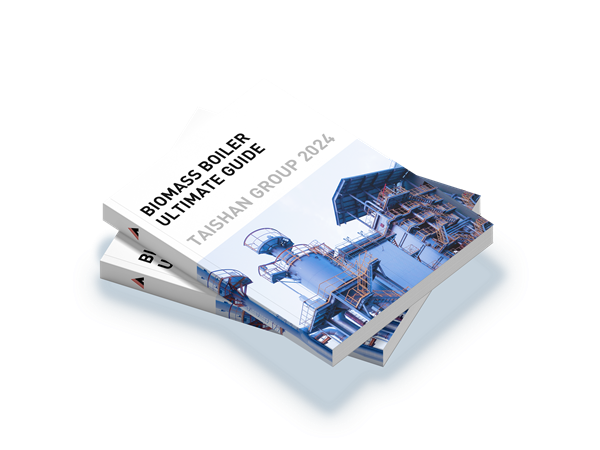
This guidebook serves as an extensive resource for professionals, engineers, and researchers interested in Biomass Boilers. It covers the fundamental principles, technology advancements, design considerations, operational challenges, and environmental impacts of Biomass Boilers. Through detailed explanations, case studies, and practical insights, readers will gain a deep understanding of Biomass Boilers technology and its applications in modern power and heat generation.














